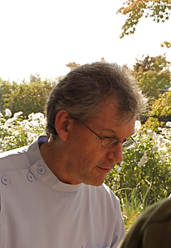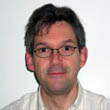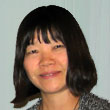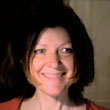Stephen Birch |
He is the co-author of seven number of books about acupuncture, five dedicated to the practice of Japanese acupuncture. In addition to the four mentioned above these include: Japanese Acupuncture (co-authored with Junko Ida), Understanding Acupuncture (co-authored with Bob Felt) and Acupuncture Efficacy (co-authored with Richard Hammerschlag). He began teaching Japanese acupuncture at the New England School of Acupuncture where he eventually became head of the Japanese Acupuncture Department. He did some additional lecturing around the US and is now an internationally known instructor in Japanese style acupuncture methods, including the advanced methods of Toyohari - East Asian Needle Therapy, lecturing around Europe (Holland, UK, Germany, Switzerland, Spain, Portugal, Scandinavia, Austria) and occasionally in Australasia. He recently accepted the post of Associate Professor at the Oslo University College of Acupuncture. This is the first government recognized degree granting acupuncture College in Scandinavia. He has been involved in acupuncture research since the late 1980s with a PhD on acupuncture research (1998). He is the past founding president of the American Society for Acupuncture Research. He worked on studies at Harvard and Yale medical schools and consulted on various other studies in the US, Europe and Australia. At present he is helping coordinate the development of a research agenda within the field of acupuncture. He is also a founding member and academic dean of the European Branch of the Toyohari Association, the chairperson of all non-Japanese branches of the Toyohari Association and the founding president of the Stichting (foundation) for the Study of Traditional East Asian Medicine. |
| Acupuncturists | ||
|
|
||
 Has a BA in philosophy (1978). He started studying acupuncture at the New England School of Acupuncture in Boston in the US in 1980. His initial teachers were Tin Yau So, Ted Kaptchuk and Kiiko Matsumoto. Since graduation in 1982, he has practiced Japanese acupuncture exclusively, including specialty pediatric treatment methods called ‘shonishin’. With the exception of the time where he was away studying, he has practiced acupuncture continuously since 1982.
Has a BA in philosophy (1978). He started studying acupuncture at the New England School of Acupuncture in Boston in the US in 1980. His initial teachers were Tin Yau So, Ted Kaptchuk and Kiiko Matsumoto. Since graduation in 1982, he has practiced Japanese acupuncture exclusively, including specialty pediatric treatment methods called ‘shonishin’. With the exception of the time where he was away studying, he has practiced acupuncture continuously since 1982.

